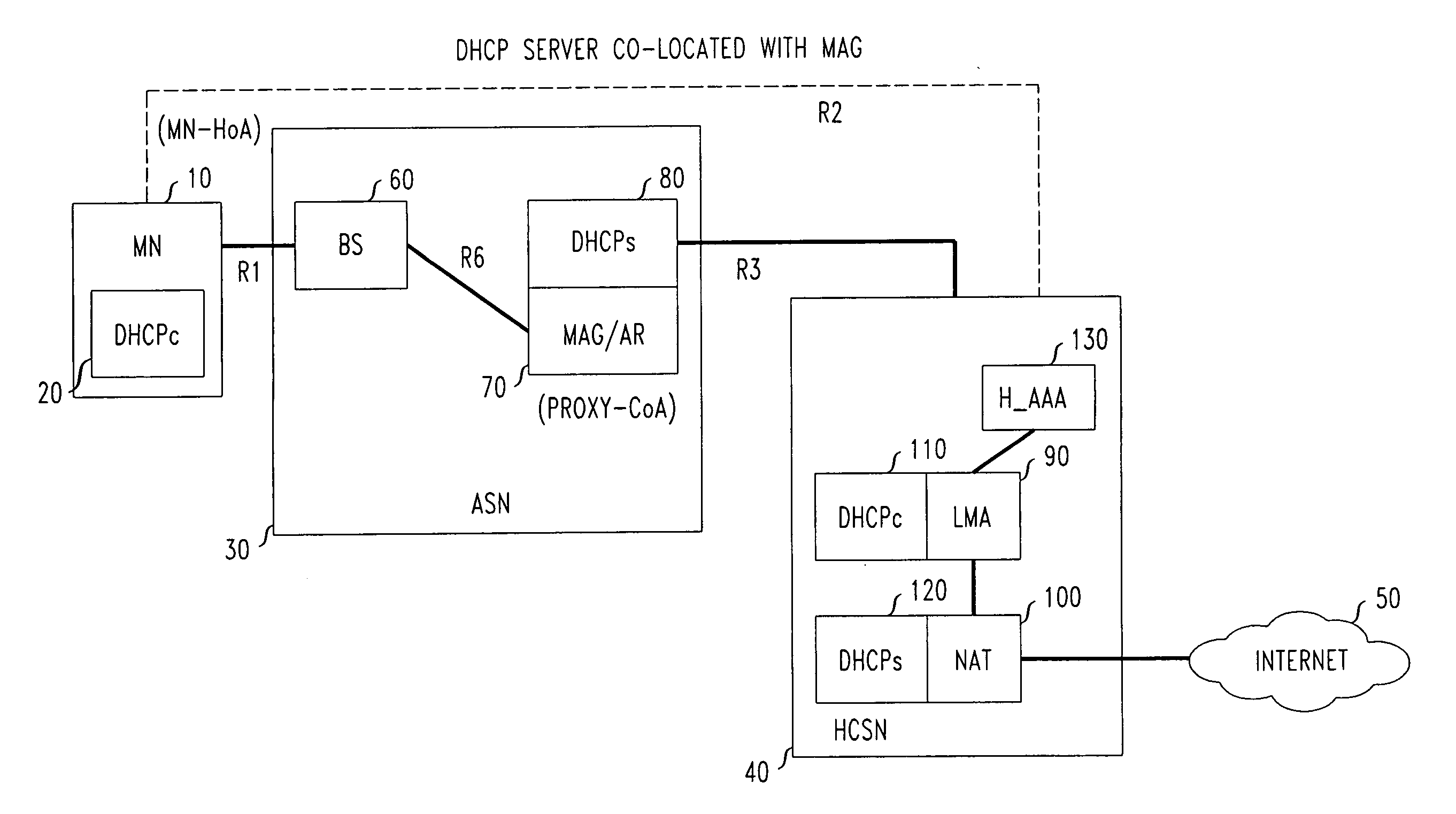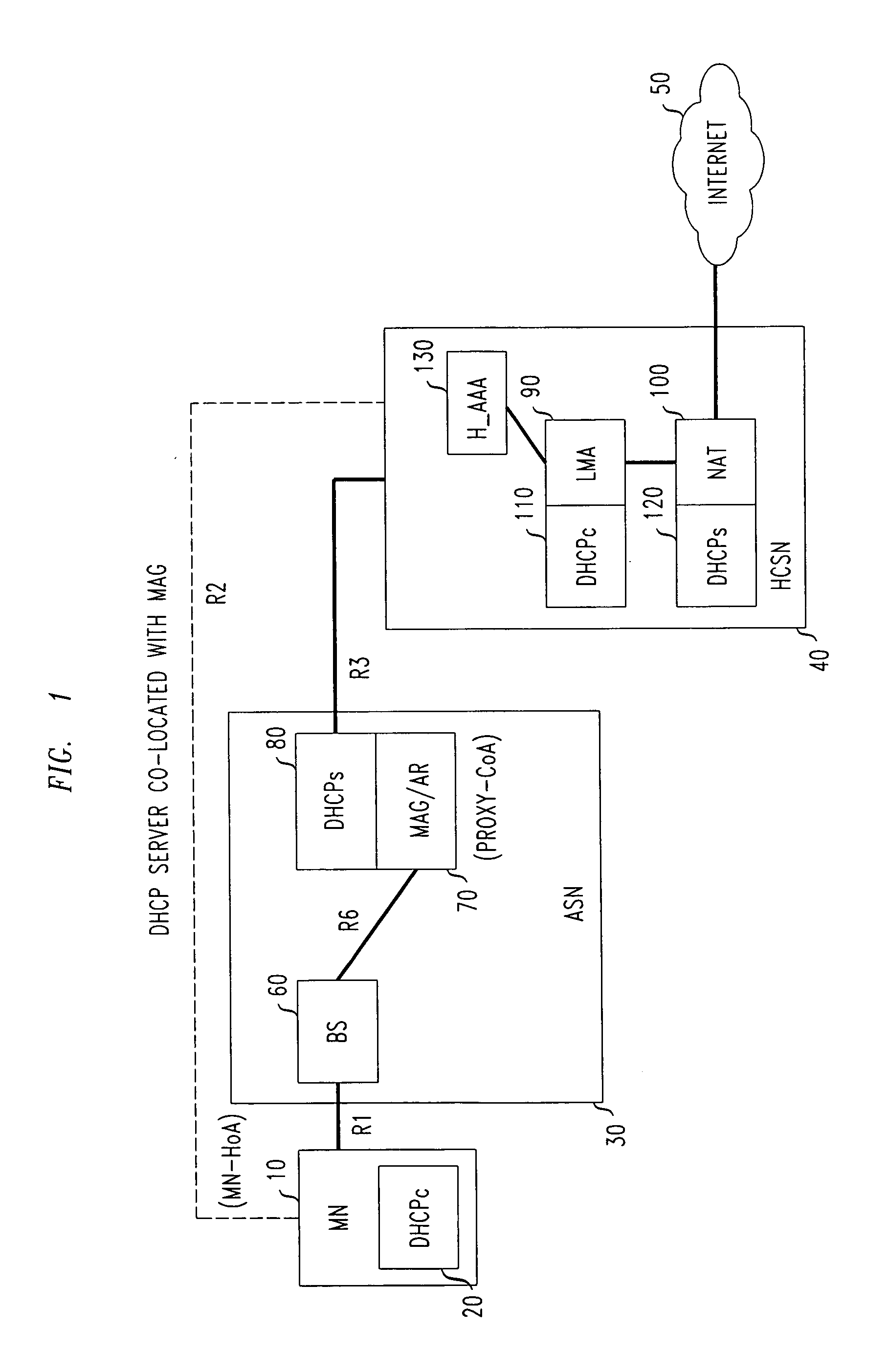Method of private addressing in proxy mobile IP networks
a mobile ip network and private addressing technology, applied in the field of private addressing in proxy mobile ip networks, can solve the problem of prone to exhaustion of the total space of public ipv4 addresses
- Summary
- Abstract
- Description
- Claims
- Application Information
AI Technical Summary
Benefits of technology
Problems solved by technology
Method used
Image
Examples
Embodiment Construction
[0023]The PMIPv6 protocol as defined in RFC 5213 allows mobile terminals without host modifications to seamlessly change their point of attachment to the access network while preserving their IP addresses and maintaining uninterrupted ongoing IP sessions. As explained above, PMIPv6 introduces two functional blocks, the Mobile Access Gateway (MAG) and the Local Mobility Anchor (LMA). The MAG is the first routing hop at which the MN is connected. The MAG assists in address configuration and data delivery from / to the MN. The MAG tunnels packets between the MN and the LMA, which plays a role similar to that of the Home Agent as specified in MIPv4 / 6 (RFC 3775). The LMA is the mobility anchor. It assigns a home IP address to the MN and is the entry point for the inbound traffic sent from the correspondent nodes that are in communication with the MN.
[0024]PMIPv6 uses a particular prefix delegation model, referred to as “per mobile node prefix.” That is, each MN connecting to the PMIPv6 dom...
PUM
 Login to view more
Login to view more Abstract
Description
Claims
Application Information
 Login to view more
Login to view more - R&D Engineer
- R&D Manager
- IP Professional
- Industry Leading Data Capabilities
- Powerful AI technology
- Patent DNA Extraction
Browse by: Latest US Patents, China's latest patents, Technical Efficacy Thesaurus, Application Domain, Technology Topic.
© 2024 PatSnap. All rights reserved.Legal|Privacy policy|Modern Slavery Act Transparency Statement|Sitemap



